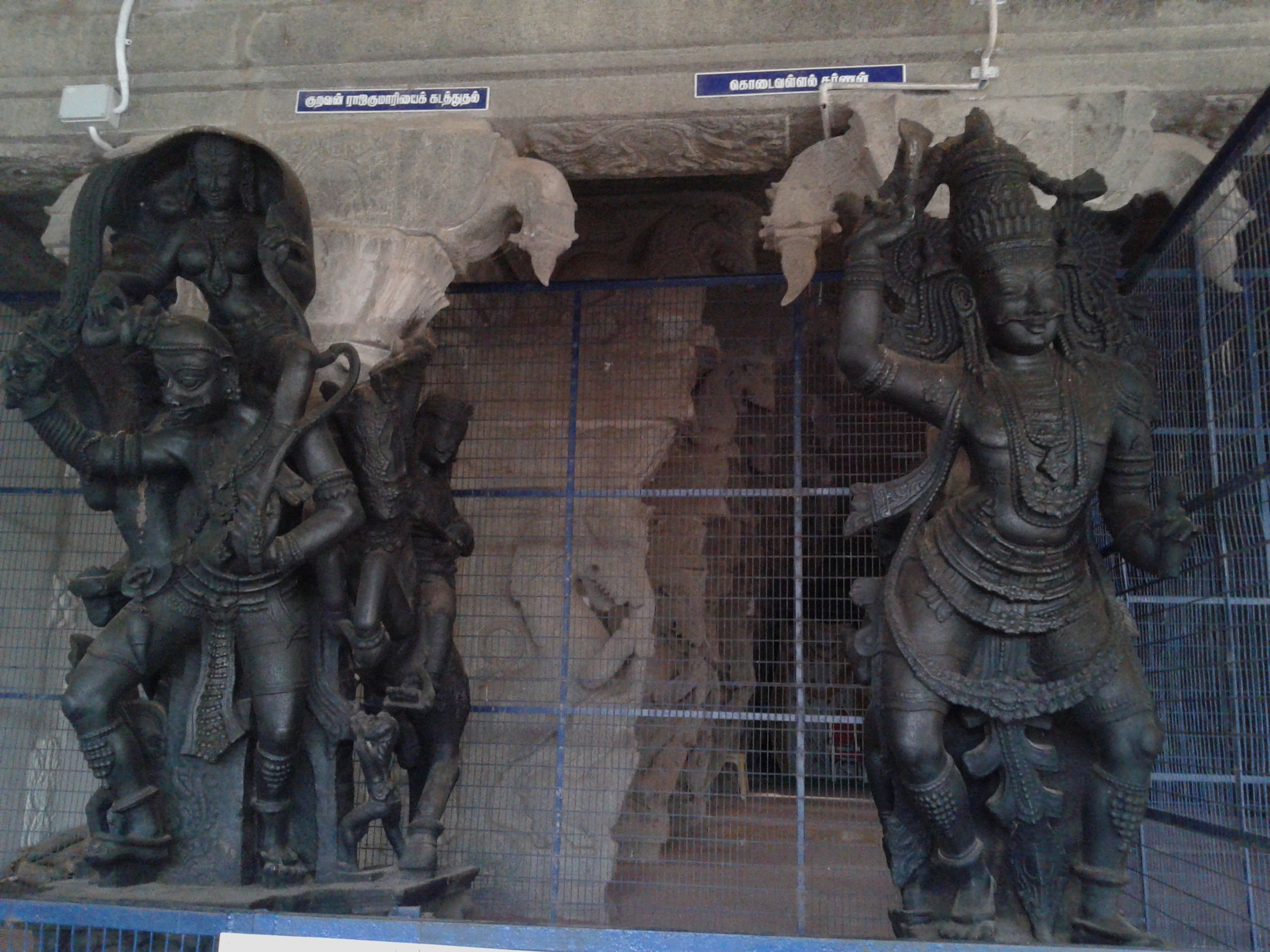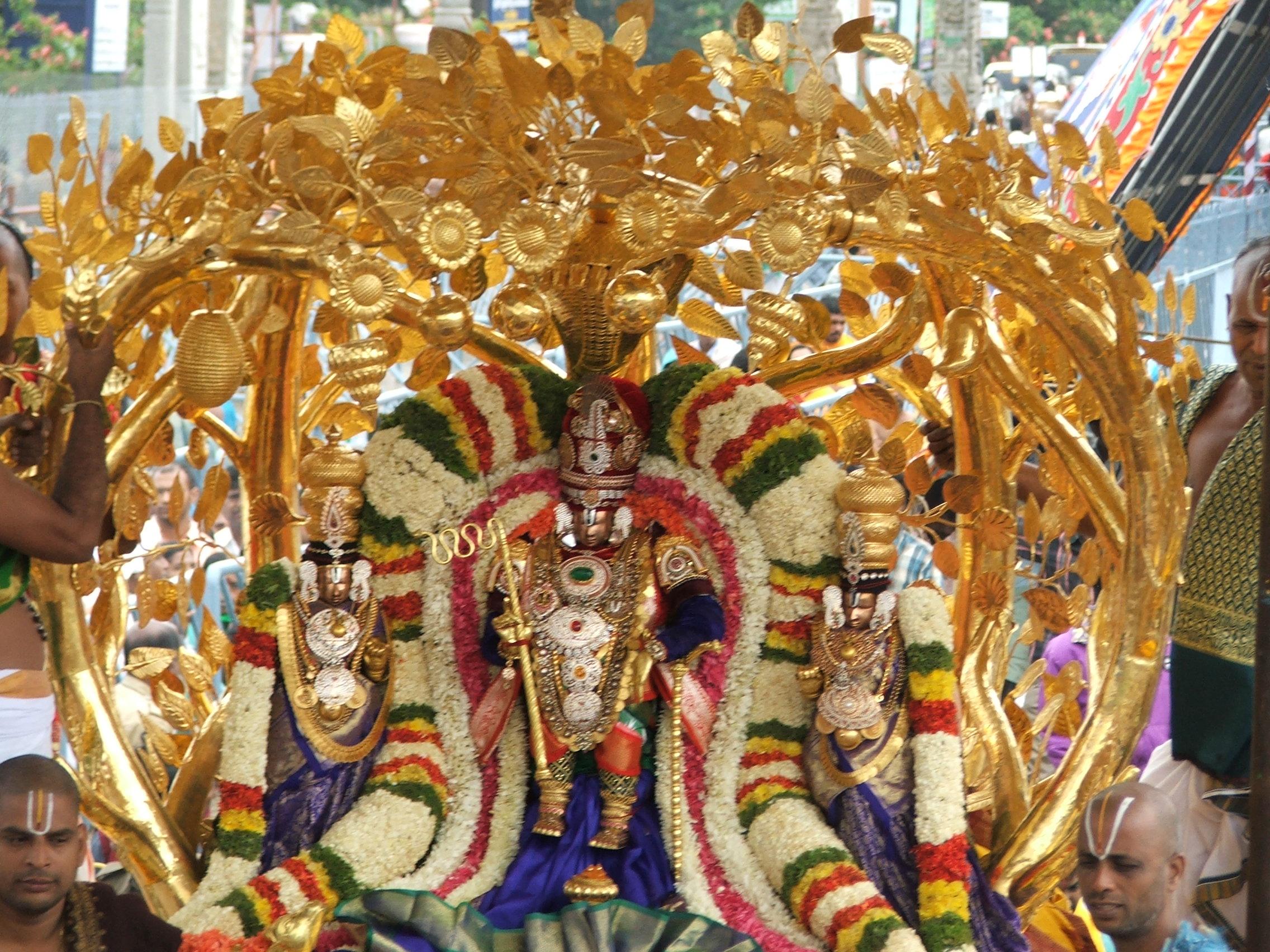|
Alagar Kovil
Alagar Kovil or 'Azhagar Kovil' is a village in Madurai district in the South Indian state of Tamil Nadu. The history and living of the village is centered around Kallazhagar Temple. Constructed in the Dravidian style of architecture, the temple is glorified in the ''Divya Prabandha'', the early medieval Tamil canon of the Azhwar saints from the 6th–9th centuries CE. It is one of the 108 ''Divyadesams'' dedicated to Vishnu, who is worshiped as Kallazhagar and his consort Lakshmi as Thirumamagal. Kallazhagar Temple Kallazhagar Temple covers an area of about and has a five-tiered ''gopuram'' (gateway tower). The temple is enclosed in a rectangular enclosure with huge granite walls. The central shrine houses the image of the presiding deity, Sundarabahu Perumal in standing posture. The images of Sridevi and Bhudevi are also housed in the sanctum. There are two life size images of Narasimha, the avatar of Vishnu. One of them is shown holding the demon Hiranya and other slaying ... [...More Info...] [...Related Items...] OR: [Wikipedia] [Google] [Baidu] |
Kallazhagar Temple
Kallalagar Temple (Kallazhagar Temple) is a Hindu temple dedicated to Vishnu in Alagar Koyil, a village in Madurai district in the South Indian state of Tamil Nadu. Constructed in the Dravidian style of architecture, the temple is glorified in the ''Naalayira Divya Prabandham'', the early medieval Tamil canon of the Alvar saints from the 6th–9th centuries CE. It is one of the 108 ''Divya Desams'' dedicated to Vishnu, who is worshiped as Kallalagar, and his consort Lakshmi as Thirumagal. This temple is called as ''Thirumaliruncholai'' in Sangam literatures and Naalayira Divya Prabandham sung by Tamil Alvar saints. A granite wall surrounds the temple, enclosing all its shrines. The temple has a seven-tiered rajagopuram. The temple is surrounded by a large fort, part of which is dilapidated. Kallalagar is believed to have appeared to redeem sage Suthapava off his curse from Sage Durvasa. The temple follows Tenkalai tradition of worship. Six daily rituals and many yearly festi ... [...More Info...] [...Related Items...] OR: [Wikipedia] [Google] [Baidu] |
Vishnu
Vishnu ( ; , ), also known as Narayana and Hari, is one of the principal deities of Hinduism. He is the supreme being within Vaishnavism, one of the major traditions within contemporary Hinduism. Vishnu is known as "The Preserver" within the Trimurti, the triple deity of supreme divinity that includes Brahma and Shiva.Gavin Flood, An Introduction to Hinduism' (1996), p. 17. In Vaishnavism, Vishnu is the supreme being who creates, protects, and transforms the universe. In the Shaktism tradition, the Goddess, or Adi Shakti, is described as the supreme Para Brahman, yet Vishnu is revered along with Shiva and Brahma. Tridevi is stated to be the energy and creative power (Shakti) of each, with Lakshmi being the equal complementary partner of Vishnu. He is one of the five equivalent deities in Panchayatana puja of the Smarta tradition of Hinduism. According to Vaishnavism, the highest form of Ishvara is with qualities (Saguna), and have certain form, but is limitless, transcend ... [...More Info...] [...Related Items...] OR: [Wikipedia] [Google] [Baidu] |
Jalakandeswarar Temple, Vellore
Jalakandeswarar Temple is a temple dedicated to Lord Shiva which is located in the Vellore Fort, in heart of the Vellore city, in the state of Tamil Nadu, India. Location The temple of the Vijaynagar period stands inside the Vellore Fort, which is under the control of the Archaeological Survey of India, along with the St. John's Church, Tippu Mahal, Hyder Mahal, Candy Mahal, Badhusha Mahal and the Begum Mahal. History According to legend, there used to a giant ant-hill at the location where the sanctum sanctorum of temple now stands. This ant-hill was surrounded by stagnant water, as a result of collection of rain water, and at some time a Shiva Lingam was placed in this water around the ant hill and worshiped. Chinna Bommi Nayaka, a Vijayanagar chieftain, who was controlling the fort had a dream where the Lord Shiva asked him to build a temple at that location. Nayaka, proceeded to demolish the anthill and build the temple in 1550 CE, and since the Lingam was surrounded by w ... [...More Info...] [...Related Items...] OR: [Wikipedia] [Google] [Baidu] |
Krishnapuram Venkatachalapathy Temple
Krishnapuram Venkatachalapathy temple (also called Krishnapuram Temple) in Krishnapuram, a village in Tirunelveli district in the South Indian state of Tamil Nadu, is dedicated to the Hindu god Vishnu. It is located 10 km from Tirunelveli. Constructed in the Dravidian style of architecture, the temple is a storehouse of Nayak architecture. A granite wall surrounds the temple, enclosing all its shrines. The temple has a five tiered '' rajagopuram'', the temple's gateway tower. The Vijayanagar and Nayak kings commissioned pillared halls and major shrines of the temple during the 16th century. The temple follows Thenkalai tradition of worship. Four daily rituals and three yearly festivals are held at the temple, of which the ten-day annual Vaikunta Ekadasi during the Tamil month of ''Margazhi'' (December - January). The temple is maintained and administered by the Hindu Religious and Endowment Board of the Government of Tamil Nadu. History There is one inscription in t ... [...More Info...] [...Related Items...] OR: [Wikipedia] [Google] [Baidu] |
Avatar
Avatar (, ; ), is a concept within Hinduism that in Sanskrit literally means "descent". It signifies the material appearance or incarnation of a powerful deity, goddess or spirit on Earth. The relative verb to "alight, to make one's appearance" is sometimes used to refer to any guru or revered human being. The word ''avatar'' does not appear in the Vedic literature; however, it appears in developed forms in post-Vedic literature, and as a noun particularly in the Puranic literature after the 6th century CE. Despite that, the concept of an avatar is compatible with the content of the Vedic literature like the Upanishads as it is symbolic imagery of the Saguna Brahman concept in the philosophy of Hinduism. The ''Rigveda'' describes Indra as endowed with a mysterious power of assuming any form at will. The ''Bhagavad Gita'' expounds the doctrine of Avatara but with terms other than ''avatar''. Theologically, the term is most often associated with the Hindu god Vishnu, though th ... [...More Info...] [...Related Items...] OR: [Wikipedia] [Google] [Baidu] |
Narasimha
Narasimha ( sa, नरसिंह, lit=man-lion, ), sometimes rendered Narasingha, is the fourth avatar of the Hindu god Vishnu. He is regarded to have incarnated in the form of a part-lion, part-man being to slay Hiranyakashipu, to end religious persecution and calamity on earth, thereby restoring dharma. Narasimha is often depicted with three eyes, and is described in Vaishnavism to be the God of Destruction; he who destroys the entire universe at the time of the great dissolution (Mahapralaya). Hence, he is known as Kala (time) or Mahakala (great-time), or Parakala (beyond time) in his epithets. There exists a matha (monastery) dedicated to him by the name of Parakala Matha in the Sri Vaishnava tradition. Narasimha is also described as the God of Yoga, in the form of Yoga-Narasimha. Narasimha iconography shows him with a human torso and lower body, with a leonine face and claws, typically with the asura Hiranyakashipu in his lap, whom he is in the process of defeating. T ... [...More Info...] [...Related Items...] OR: [Wikipedia] [Google] [Baidu] |
Bhūmi
Bhumi ( sa, भूमि, Bhūmi), also known as Bhudevi and Vasundhara, is a Hindu goddess who is the personification of the Earth. She is a consort of the god Vishnu. According to Vaishnava tradition, she is the second aspect of Vishnu's consort, Lakshmi, along with the aspects of Sridevi and Niladevi. Varaha, the third avatar of Vishnu, saved her from the demon Hiranyaksha and later married her, making her one of his consorts. She is regarded as the mother of Narakasura, Mangala, and Sita. Etymology and iconography The name "Bhūmi" is Sanskrit word for "earth". The version "Puhumi" is the equivalent in Old Awadhi. She is known by various names such as Bhuvati, Bhuvani, Bhuvaneshwari, Avni, Prithvi, Varahi, Dharti, Dhaatri, Dharani, Vasudha, Vasundhara, Vaishnavi, Kashyapi, Urvi, Ira, Mahi, Ela, Vasumati, Dhanshika, Vasumati, Hema, and Hiranmaya. Bhudevi is depicted as seated on a platform that rests on the back of four elephants, representing the four cardinal directions. S ... [...More Info...] [...Related Items...] OR: [Wikipedia] [Google] [Baidu] |
Gopuram
A ''gopuram'' or ''gopura'' ( Tamil: கோபுரம், Malayalam: ഗോപുരം, Kannada: ಗೋಪುರ, Telugu: గోపురం) is a monumental entrance tower, usually ornate, at the entrance of a Hindu temple, in the South Indian architecture of the Southern Indian states of Tamil Nadu, Andhra Pradesh, Kerala, Karnataka, and Telangana, and Sri Lanka. In other areas of India they are much more modest, while in Southern Indian temples they are very often by far the highest part of the temple. Ancient and early medieval temples feature smaller ''gopuram'', while in later temples they are a prominent feature of Hindu Dravidian style; in many cases the temple compound was expanded and new larger gopuram built along the new boundary. They are topped by the ''kalasam'', a bulbous stone finial. They function as gateways through the walls that surround the temple complex. Another towering structure located towards the center of the temple is the Vimanam. Both of th ... [...More Info...] [...Related Items...] OR: [Wikipedia] [Google] [Baidu] |
Lakshmi
Lakshmi (; , sometimes spelled Laxmi, ), also known as Shri (, ), is one of the principal goddesses in Hinduism. She is the goddess of wealth, fortune, power, beauty, fertility and prosperity, and associated with ''Maya'' ("Illusion"). Along with Parvati and Saraswati, she forms the Tridevi of Hindu goddesses. Within the goddess-oriented Shaktism, Lakshmi is venerated as the prosperity aspect of the Mother goddess. Lakshmi is both the consort and the divine energy (''shakti'') of the Hindu god Vishnu, the Supreme Being of Vaishnavism; she is also the Supreme Goddess in the sect and assists Vishnu to create, protect, and transform the universe. She is an especially prominent figure in Sri Vaishnavism, in which devotion to Lakshmi is deemed to be crucial to reach Vishnu. Whenever Vishnu descended on the earth as an avatar, Lakshmi accompanied him as consort, for example, as Sita and Radha or Rukmini as consorts of Vishnu's avatars Rama and Krishna, respectively. The eight ... [...More Info...] [...Related Items...] OR: [Wikipedia] [Google] [Baidu] |

.jpg)
.jpg)



_2019_03.jpg)